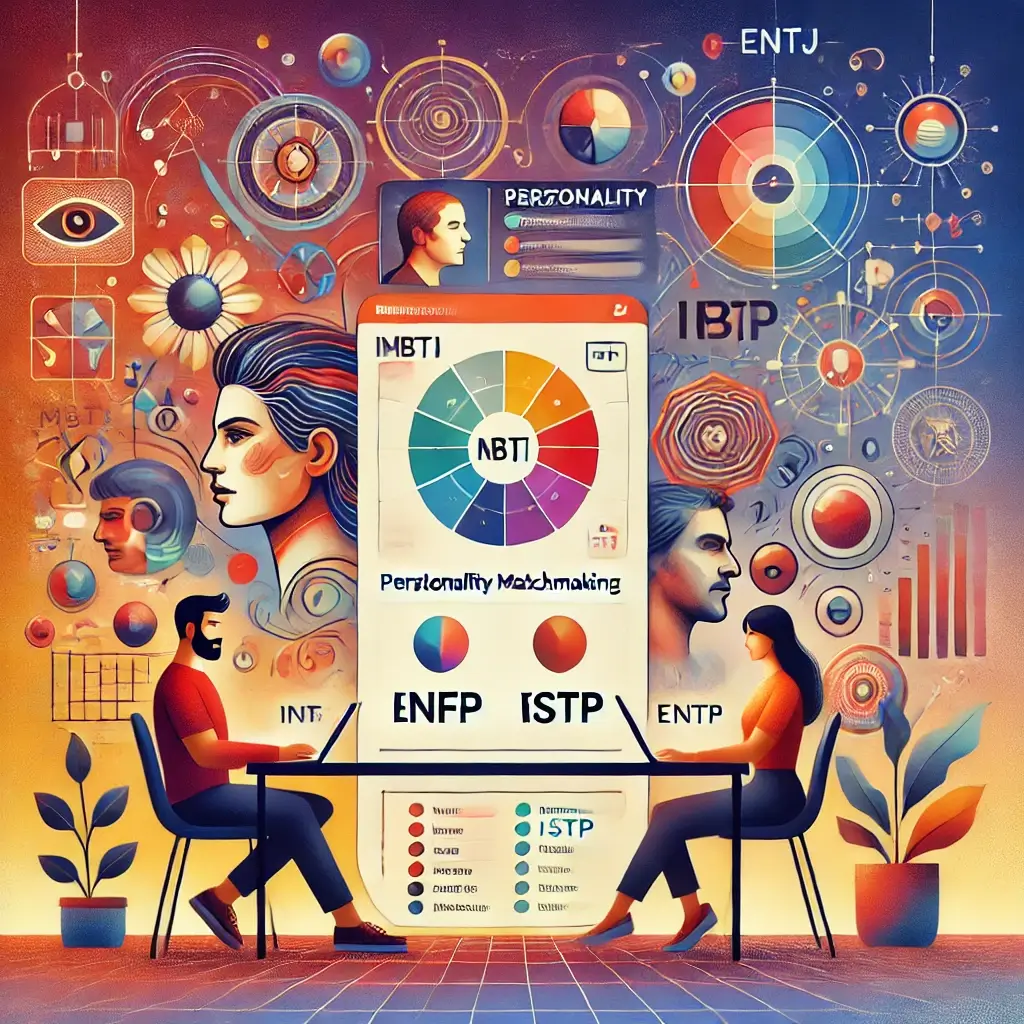Navigating the Challenges of Modern Dating
Dating in the modern era is a dynamic and often overwhelming process. With countless platforms and an emphasis on compatibility, the search for a meaningful connection can feel like finding a needle in a haystack. Amid this complexity, the Myers-Briggs Type Indicator (MBTI) has emerged as a tool for understanding personality compatibility. Known for its ability to categorize individuals into 16 personality types, the MBTI provides a lens through which daters can explore their own traits and better understand potential partners.
Expert Perspectives on Personality Typing
Dr. Sarah Blake, a renowned psychologist specializing in interpersonal relationships, asserts, “The MBTI offers a framework for self-reflection and mutual understanding, which are cornerstones of successful relationships.” However, while it’s tempting to lean heavily on personality typing to predict relationship success, the MBTI should be seen as a starting point rather than a definitive answer.
Understanding MBTI in Today’s Dating Landscape
This article delves into the MBTI’s place in modern dating, exploring its benefits, limitations, and practical applications. By understanding both the potential and the pitfalls of personality typing, individuals can navigate their relationships with greater clarity and intention.
Research-Backed Insights on MBTI Compatibility
The impact of personality typing on compatibility has been widely studied. A notable report from the Global Relationship Research Institute (2024) analyzed over 10,000 relationships to identify trends in MBTI-based compatibility. Key findings included:
Shared Preferences Enhance Stability: Partners who shared preferences (e.g., two Judgers or two Perceivers) often reported smoother day-to-day interactions.
Opposites Foster Growth: Contrasting preferences, such as an Intuitive-Thinker paired with a Sensing-Feeler, led to relationships marked by growth and mutual learning.
Communication Holds the Key: Regardless of type, relationships with open and adaptable communication showed the highest levels of satisfaction.
These findings underscore the MBTI’s value as a tool for understanding dynamics, rather than prescribing rigid rules for compatibility.
How MBTI Enhances Emotional Intelligence
The MBTI’s emphasis on cognitive functions offers unique insights into how individuals process emotions and communicate. Studies from the Emotional Intelligence and Relationships Journal (2023) reveal:
Understanding Emotional Triggers: Awareness of personality types helps individuals recognize their own emotional triggers and those of their partners.
Tailored Communication: Adjusting communication styles to align with a partner’s preferences can reduce misunderstandings by 40%.
Dr. Blake adds, “Using the MBTI to build emotional intelligence strengthens relationships by fostering empathy and reducing reactive behaviors.”
Personality Typing in the Digital Dating World
With apps like Tinder, Hinge, and Bumble incorporating personality elements, MBTI has found its way into digital dating. Some apps explicitly integrate personality quizzes, while others rely on prompts and filters that resonate with MBTI traits. For instance:
Self-Awareness in Profiles: Users who highlight their MBTI types often attract like-minded individuals.
Enhanced Matching Algorithms: Incorporating personality compatibility into matchmaking improves user satisfaction and connection success.
Practical Applications of MBTI in Relationship Building
The MBTI offers a wealth of insights, but its effectiveness depends on how it’s applied. Here are some strategies:
Focus on Growth, Not Labels: Use MBTI insights to identify growth opportunities rather than confining yourself to labels.
Cultivate Self-Awareness: Understanding your own personality type helps clarify your needs and boundaries in a relationship.
Encourage Open Conversations: Discussing personality types with a partner can foster understanding and deepen connections.
Integrate with Other Tools: Combine MBTI insights with other compatibility frameworks, such as love languages or attachment styles.
Recognizing the Constraints of Personality Assessment
While the MBTI is a valuable tool, it has its shortcomings:
Simplistic Categorization: Human personalities are fluid and cannot be fully captured by 16 types.
Cultural Bias: The MBTI’s origins in Western psychology may not fully account for cultural differences in personality expression.
Overemphasis on Types: Rigidly adhering to MBTI types can lead to stereotyping and missed opportunities for connection.
Recognizing these limitations allows individuals to use the MBTI responsibly and in conjunction with a broader understanding of relationship dynamics.
Embracing MBTI as a Guide for Deeper Connections
The Myers-Briggs Type Indicator serves as a powerful tool for fostering self-awareness and enhancing relationship dynamics in the modern dating world. By understanding its strengths and limitations, individuals can use the MBTI to navigate their relationships with intention and empathy. As Dr. Blake emphasizes, “The MBTI is not a magic formula for love, but it’s a meaningful step toward greater understanding and connection.”
Whether you’re swiping on a dating app or nurturing a long-term partnership, the MBTI offers a unique perspective to help you build stronger, more fulfilling relationships.
Academic Sources and Further Reading
References
Blake, S. (2024). “The Role of Personality Typing in Emotional Intelligence.” Emotional Intelligence and Relationships Journal, 19(4), 102-117.
Global Relationship Research Institute. (2024). “MBTI Trends in Modern Relationships.” Annual Review of Relationship Studies, 13(2), 45-76.
Modern Psychology Review. (2023). “Understanding Growth Through Personality Differences.” 20(3), 98-114.
Tinder Insights Report. (2023). “Personality Typing and Digital Dating Success.” Global Trends in Online Dating.
